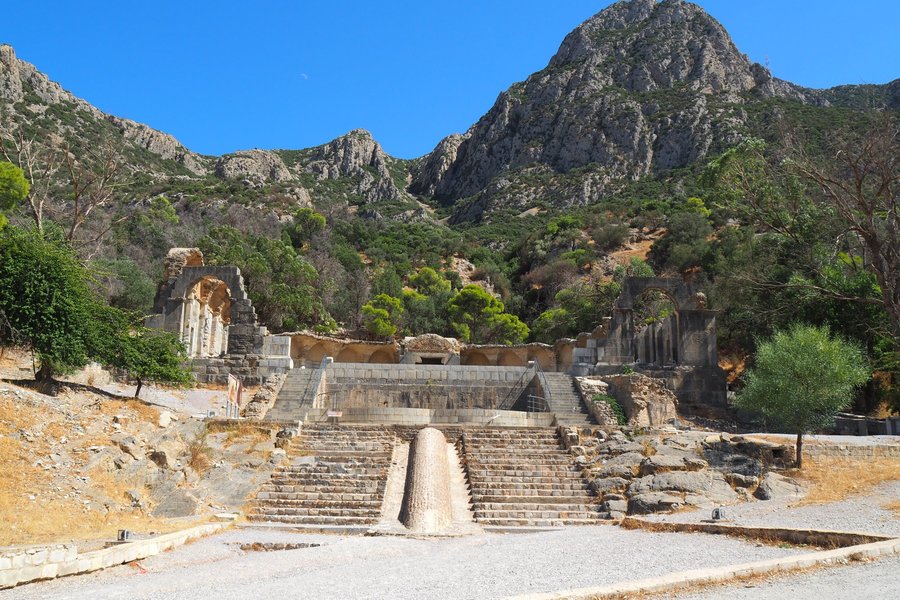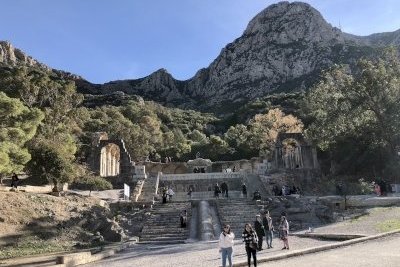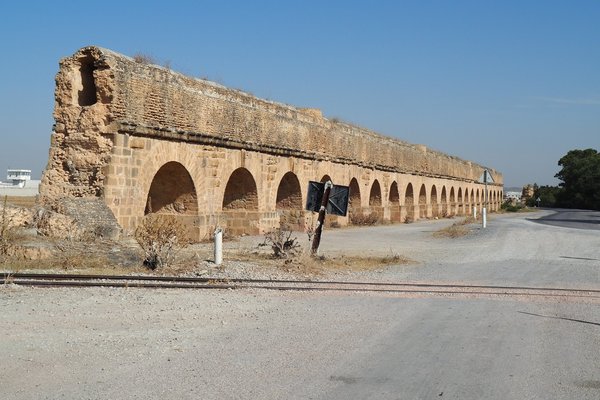Tunisia
Complexe hydraulique romain de Zaghouan-Carthage
The Roman hydraulic complex of Zaghouan-Carthage supplied Carthage with water.
At a total length of 132 km (including tributary channels), it was amongst the longest aqueducts in the Roman Empire. It is considered a masterpiece of Roman engineering: it was constructed in a way that the water travelled by force of gravity alone and used hills in the landscape.
Site Info
Official Information
- Full Name
- Le complexe hydraulique romain de Zaghouan-Carthage (ID: 5685)
- Country
- Tunisia
- Status
-
On tentative list 2012
Site history
History of Complexe hydraulique romain de Zaghouan-Carthage
- 2012: Added to Tentative List
- Added to tentative list
- Type
- Cultural
- Criteria
Links
- UNESCO
- whc.unesco.org
All Links
UNESCO.org
- whc.unesco.org — whc.unesco.org
Community Information
- Community Category
- Archaeological site: Ancient Rome
- Secular structure: Civic and Public Works
Travel Information
Recent Connections
News
No news.
Recent Visitors
Visitors of Complexe hydraulique romain de Zaghouan-Carthage
- Adrian Turtschi
- Alexander Lehmann
- Ana
- Boj
- Bram de Bruin
- Christian Wagner
- Christoph
- Christravelblog
- Erik Jelinek
- Geert Luiken
- George Gdanski
- Hammeel
- henryjiao18
- Ian Cade
- Joel on the Road
- Ludvan
- marc Rouserez
- M. Huineman
- MoPython
- Persian Globetrotter
- Priyaranjan Mohapatra
- Randi Thomsen
- Roger Ourset
- Rudegirl
- Sergio Arjona
- Shandos Cleaver
- Ssong.x
- Stanimir
- Stanislaw Warwas
- Svein Elias
- Thomas Buechler
- Timothy C Easton
- tony0001
- voyager
- WalGra
- Wojciech Fedoruk
- Zach
Community Reviews
Show full reviews
This is a multiple UNESCO site that I really liked because it requires a mental connection between several places that are several dozen kilometers apart from each other. Upstream, the catchment areas called nymphaeums or water temples, of which the one at Zaghouan is a part, downstream in Carthage the cisterns of the Maalga and the Antonine baths, and between the two the Zaghouan aqueduct itself.
The aqueduct has nothing to envy of that of the Pont du Gard in France, which is 48 m high and 50 km long; that of Zaghouan is 34 m at its highest for a length which totals almost three times that of the Pont du Gard, which is a technical feat comparable to the amphitheater of El-Djem.
But what is most interesting about Zaghouan is precisely the interconnection between these three elements: the capture of the water source, its transport, and its use in Carthage.I discuss the Antonine Baths on the page dedicated to Carthage.
Coming from Tunis, a beautiful, long, aerial section of the aqueduct is visible along the P3 road. It's hard to miss, as it marks the landscape. It's worth turning off the road to the left when the aqueduct bends and following it until the road leaves it. It's established that the aqueduct supplied water to the city of Carthage, but what about agriculture? It seems not.
The Zaghouan Water Temple is located a little outside the city of the same name, at the foot of the Jebel. The …
Keep reading 0 commentsBoj
Complexe hydraulique romain de Zaghouan-Carthage
Complexe hydraulique romain de Zaghouan-Carthage (On tentative list)

In December 2022, my brother and I went south of Tunis to visit Zaghouan, along with Uthina and Zriba Olya, an abandoned Berber mountain village. On the way to Zaghouan town, one could stop by and visit portions of the aqueduct.
The property has OUV potential, given its claim to be one of the longest aqueducts ever built in the Roman empire - 132km from the Zaghouan sacred spring and temple (pictured here) to Carthage, using the natural contours and topography of the landscape. The properties however need significant restoration.
Keep reading 0 comments
